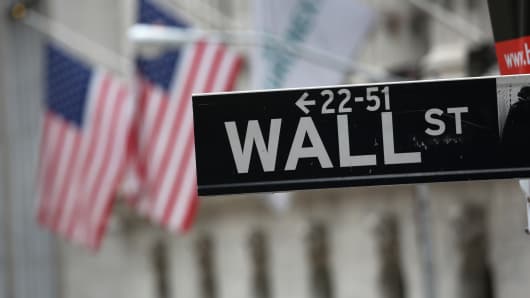Despite recent declines, U.S. tech stocks are worth backing if you're careful about how you define U.S. tech.
Investing in the Nasdaq Composite exposes you to a higher proportion of 'new tech' sectors that are already highly valued – biotech, consumer, mobile gaming, and social media. By contrast, the S&P 500 IT index is more heavily weighted to 'old tech' stocks – business-oriented companies with attractive valuations that can benefit from U.S. companies' growing IT spend. If investors define U.S. tech in S&P terms, current talk of a bubble makes a lot less sense.
The selloff that has grabbed headlines for much of the past six weeks largely focused on momentum stocks – a category of fast growing companies, typically listed on Nasdaq, that includes "new tech" plays from mobile gaming to social media. While their ordeal cannot be denied, they only partly contributed to the Nasdaq's decline; 60 percent of the selloff was in fact driven by other momentum stocks, mostly in the biotech and consumer sectors. Furthermore, all but a handful of these "new tech" stocks have a low market capitalization and thus do not factor in major benchmarks, making them ill-suited to represent the entire sector.
Read MoreFBR's Dan Ives sees golden opprtunity for tech M&A
However, the S&P 500 IT index – by definition a pure-play exposure to the biggest names in the industry – is trading at a fraction of the 80 times price-to-earnings ratio assigned to the sector in 2000.
Equally important, valuations are below long-term trend. At a multiple of around 15 times, S&P 500 IT index is 6 percent below its 10-year average and 2 percent cheaper than the entire S&P 500. Historically, the sector has traded at a 12 percent premium to the broader index. This undervaluation in both absolute and relative terms remains even though the stocks have benefited from investors' rotation out of "new tech" into "old tech" stocks.
These hard valuation facts alone are enough to dispel the bubble myth and to argue that the S&P 500 IT index is the best way to invest in technology at this time. However, they only tell half the story.
Read MoreMillionaires bullish on tech stocks
The other half of the story lies in the companies' considerable strength and potential. Financially, indexes 65 constituents have an average free-cash-flow yield of 7 percent, the second highest of all 10 sectors in the broader index after telecom. This has allowed them to fortify their balance sheets with cash they could use to reward shareholders or pursue growth opportunities.
Further underpinning the sector is the spending outlook for enterprises that had delayed investment in technology during the past few years of economic adjustment. On one hand, companies have ever more legitimate reasons to increase capital expenditure: improving global final demand, aging plants and equipment, and access to low-cost financing. On the other hand, sector innovations are gaining market penetration and have become secular growth drivers: cloud computing, big data, e-commerce, and mobile computing.
A recent UBS survey of corporate chief information officers shows that over 60 percent are more optimistic about increasing spending; that the majority of the spending will likely be allocated to long-term IT architecture requirements; and that enterprise IT spending will likely grow 7.7 percent over the next 12 months.
Read MoreNew Orleans begins to attract tech start-ups
Meanwhile, UBS economists predict business-equipment spending will increase 7.5 percent this year and 10 percent in 2015 - well above the 3.1 percent growth in 2013. Should enterprises' capital expenditure plans come to fruition, it would fuel a re-rating of the S&P 500 IT stocks. All of this will further prove that reports of the sector's bubble valuations have been greatly exaggerated.


